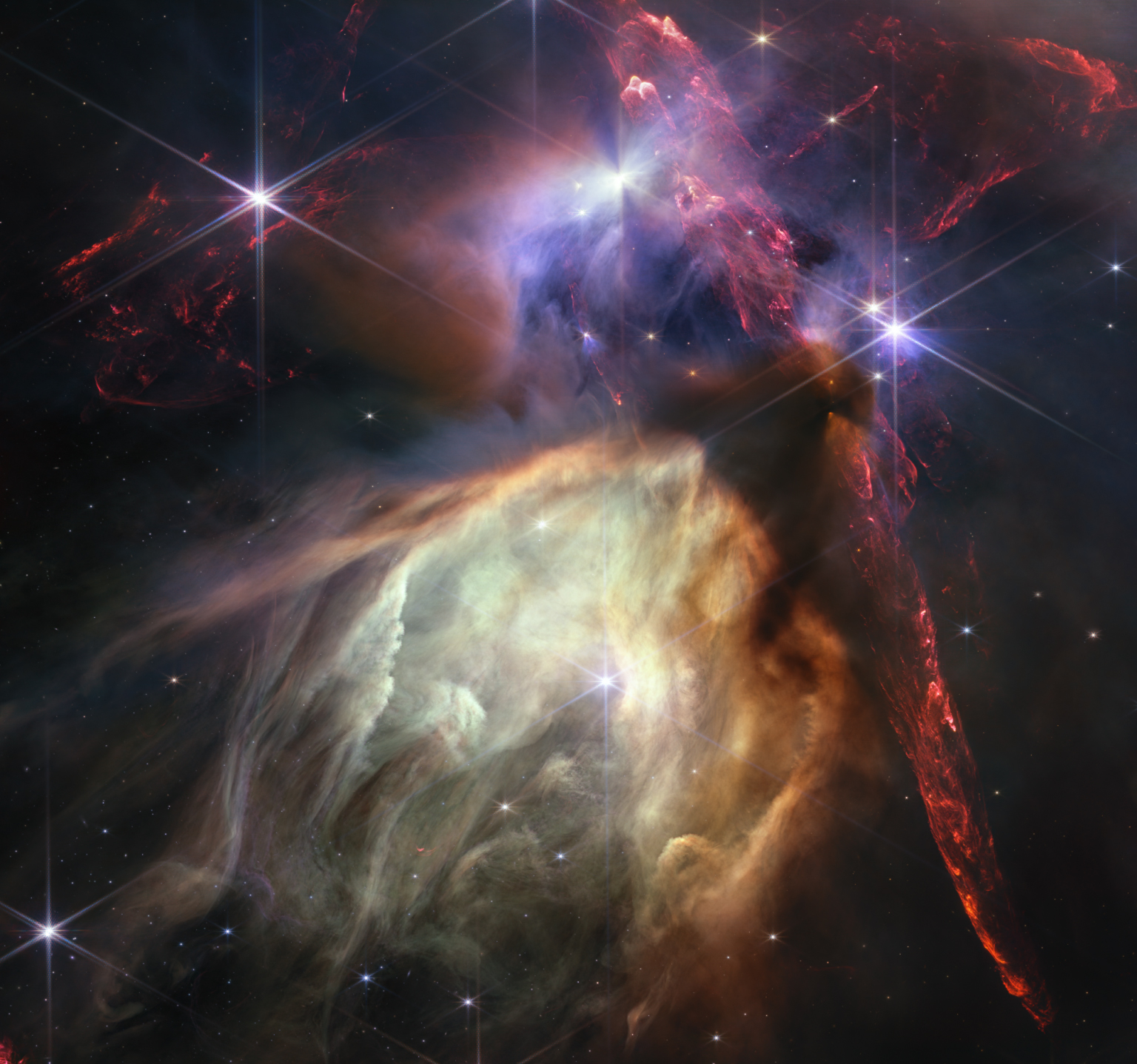The Sun is indeed the only star in our Solar System. It stands at the center, hosting planets, moons, and other bodies in its orbit.
The Sun’s unique position as the solitary star in our Solar System distinguishes it as the primary source of light and energy for Earth and its neighboring planets. This singular stellar presence is critical for life on our home planet, driving the climate and weather patterns that support a diversity of ecosystems.
Our Solar System’s structure, with the Sun as its gravitational anchor, allows for the stable orbits of planets, contributing to the conditions necessary for life as we know it. Understanding the role of the Sun is fundamental in comprehending our place in the cosmos. Its solitary reign over the Solar System underpins not just the cycles of day and night, but also the very existence of all life on Earth, making it a pivotal topic of study in both astronomy and all related sciences.
The Sun’s Role In Our Solar System
The Sun sparks life and sustains planets. It forms the core of our solar system. Its gravity keeps planets and other bodies in a harmonious dance. Without it, darkness and ice would prevail.
Comparing The Sun To Other Celestial Bodies
The Sun towers over our solar neighborhood. Different from other stars, it’s closer and vital for Earth.
- Size: Over 1 million Earths fit inside the Sun.
- Brightness: Up close, the Sun outshines billions of distant stars.
- Temperature: A scorching 5,500°C on its surface.
| Celestial Body | Mass (compared to Sun) | Average Distance from Earth |
|---|---|---|
| Sun | 1 (Solar Mass) | ~149.6 million km |
| Nearest Stars | ~0.1 to 50 (Solar Mass) | ~4.37 light-years (Proxima Centauri) |
| Planets | ~0.000003 (Earth’s mass) | Varies |
Solar System Dynamics And The Sun’s Influence
Under the Sun’s rule, each planet stays on its path. Its mass grips them in orbit. Here’s how the Sun’s power shapes the solar system.
- Gravity: Earth and planets orbit because of the Sun’s pull.
- Seasons: Earth tilts, creating seasons, thanks to Sun’s heat.
- Tides: The Sun and Moon cause ocean tides on Earth.
Life thrives under the Sun’s gentle balance of warmth and gravity. This balance supports oceans and weather. It fuels the life cycle on Earth. A unique star, the Sun is the heart of our cosmic neighborhood, the singular lighthouse in the vastness of space directing the rhythm of our existence.
Credit: exoplanets.nasa.gov
Stars Vs. Planets: Clearing The Confusion
A lot of people mix up stars and planets. They sparkle in the sky, but they’re different. This part of the blog will explain how they’re not the same.
Characteristics Of Stars
Stars are massive space balls.
- They burn with nuclear reactions.
- Stars give light and heat.
- They’re made mostly of hydrogen and helium.
The Sun is a star. It’s the only one in our solar system. It holds everything together with its gravity.
What Makes Planets Different
Planets don’t make their own light.
- They orbit stars, like Earth circles the Sun.
- Planets have solid or gassy surfaces.
- They’re smaller than stars.
Planets reflect light. The Moon looks bright because it reflects the Sun’s light.
| Stars | Planets |
|---|---|
| Create light and heat | Reflect light |
| Big balls of gas | Have surfaces to walk on |
| Fueled by nuclear reactions | No nuclear reactions |
Remember, in our solar system, the Sun is the main star. All other stars are light-years away. Planets like Earth are the Sun’s neighbors, floating and spinning around it.
Common Myths About Stars In Our Solar System
Many stories float around about the stars in our solar system. Let’s untangle fact from fiction and explore some enduring myths about our cosmic neighborhood.
The Misconception Of Multiple Stars
One widespread belief is that various stars call our solar system home. This isn’t true. Our solar system has one star, the Sun. All other stars are light-years away, in different systems.
Here’s a simple breakdown:
- The Sun is the center of our solar system.
- There are no other stars within this system.
- Nearest stars are in neighboring solar systems, beyond ours.
Cultural And Historical Perspectives
Cultures around the world have told tales about the stars. These stories often featured multiple stars within our own system. Despite being captivating, these are myths.
Here’s what history shows us:
| Culture | Belief |
|---|---|
| Ancient Greeks | Planets were wandering stars. |
| Polynesians | Used stars for navigation. |
Historical star stories are rich in imagination, but today’s science tells us the sun is alone in our solar system. Let’s cherish these tales, but embrace the facts we know now.
Scientific Evidence: Our Solar Single Star System
Our solar system holds many mysteries and wonders. Among these is the magnificent Sun at its center. Scientists around the world agree. The Sun is the only star within our solar system. This solitary giant dictates the rhythms of all planetary bodies around it. Let’s explore the scientific evidence that solidifies our Sun’s unique status in the local cosmos.
Astronomical Studies And Observations
Centuries of sky gazing have yielded immense data. Astronomers use powerful telescopes to peer deep into space. They examine the movement of celestial bodies. Their conclusions are clear. No other stars exist within the gravitational pull of our solar system.
Key points discovered through these studies include:
- Proximity: The nearest star, Proxima Centauri, resides far beyond the outer edges of our solar system.
- Orbits: All planets orbit the Sun. No evidence shows they orbit another star.
- Singleton: The solar system’s dynamics fit a single-star model. A binary or multiple star system would alter these dynamics significantly.
The Unique Nature Of The Sun
The Sun is a G-type main-sequence star. A fancy way of saying it’s a typical star, but its role for us is anything but typical. It stands as the linchpin of our solar system. Its unique characteristics include:
| Characteristic | Detail |
|---|---|
| Mass | The Sun holds 99.86% of the solar system’s mass. |
| Stability | The Sun has a stable luminosity, vital for life on Earth. |
| Distance | It is at the perfect distance to support life on our planet. |
Such characteristics do not only support life. They also single out the Sun as the sole star governing our planetary family. It is crucial in maintaining the delicate balance that allows life to flourish on Earth.
Implications Of A Solitary Sun
Our sun is like a lone sentinel, lighting up the vast space around us. It stands alone in the solar system, the only star to shepherd the planets in their orbits. This singular nature has profound effects, shaping everything from the path our Earth takes to the very beginnings of life itself. Let’s explore the implications of such a solitary sun.
Effects On Planetary Orbits And Climate
The Sun’s gravitational pull is the boss of the solar system. It’s what keeps our planet and its siblings in line, orbiting in a predictable pattern. With no other stars in the mix, these paths are stable and steady.
- This stability is a key player in our climate system.
- It allows for consistent seasons and relatively mild climate shifts.
It’s a simple equation, really: one sun means balanced orbits, and balanced orbits mean a stable climate, essential for life as we know it.
The Sun’s Impact On Life On Earth
All life on Earth owes a thank you card to the Sun. It’s the ultimate power source, fueling everything from the smallest plankton to towering redwoods.
Without it, our world would be a lifeless lump of rock and ice. Photosynthesis converts sunlight into an all-you-can-eat buffet for plants, which in turn, sustains the rest of the food chain.
| Life Process | Sun’s Role |
|---|---|
| Photosynthesis | Provides energy for plants |
| Water Cycle | Drives evaporation and rainfall |
| Climate Control | Dictates weather patterns and seasons |
Just imagine our weather: it’s all thanks to the Sun! Our star’s rays warm the planet, stirring the atmosphere and oceans into the dynamic systems that create weather. No Sun, no blue skies, no pitter-patter of rain – our world would be unrecognizable.
So yes, the Sun is a solitary star, but it’s a star that delivers in a big way. Its loneliness translates into a balanced, life-sustaining home for us all.

Credit: exoplanets.nasa.gov
Exploring Beyond Our Solar System
Inside our own solar neighborhood, the Sun stands alone as the single star of our system. Yet, when we gaze beyond the bounds of our solar family, a vast cosmos peppered with a myriad of stars unveils itself. This is a universe where stars often have companions, and countless suns nurture distant worlds.
Binary And Multiple Star Systems
Close to home, our Sun is a solo performer, but it’s an exception in a galaxy filled with clusters of stars. Binary stars are like cosmic dance partners, gravitationally bound to each other, orbiting a common center. Triple or multiple star systems include three or more stars intertwined by gravity’s pull. Their existence prompts a question: How do planets fare in these complex stellar tangoes?
- Binary stars can share varied distances, sometimes close enough to exchange material.
- Planets in multiple systems can orbit just one or several stars.
- The dynamics of these orbits might challenge our understanding of planetary formation and stability.
The Search For Exoplanets And Alien Suns
Mankind has long wondered about worlds beyond our Sun. The search for exoplanets brings us closer to answering timeless questions. Exoplanets are planets around other stars, called alien suns.
- Astronomers use telescopes to look for tiny dips in starlight, which may suggest a planet crossing a star.
- Spectroscopy lets scientists detect the wobble of a star caused by an orbiting planet’s gravity.
- Data from these methods reveal planets of all sizes and distances, in systems vastly different than our own.
This relentless pursuit expands our cosmic horizons and deepens our knowledge of the universe’s architecture. Each discovery unveils the diversity and wonder stretching across the star-speckled expanse of our cosmos.

Credit: science.nasa.gov
Frequently Asked Questions Of Is The Sun The Only Star In Our Solar System
Do We Have Other Stars In Our Solar System?
No, our solar system has only one star, the Sun. Other stars exist outside our solar system, in the wider Milky Way galaxy.
Is Every Star In Our Galaxy A Sun?
Not every star in our galaxy is a Sun. “The Sun” is the name of our specific star, while others have their own unique identities.
Are There Other Suns In The Universe?
Yes, there are billions of suns, or stars, scattered throughout the universe, many with their own systems of planets.
Is The Sun Not A Star Yes Or No?
The Sun is indeed a star. It’s the closest star to Earth, providing our planet with light and heat.
Conclusion
To sum up, our Sun remains the lone star in our solar system, a fact that underscores its significance to life on Earth. Exploring the cosmos reveals countless stars, but none are as close or vital to us as the Sun.
Remember, this brilliant celestial body is at the heart of our planetary family, sustaining life and inspiring wonder through its solitary splendor.





